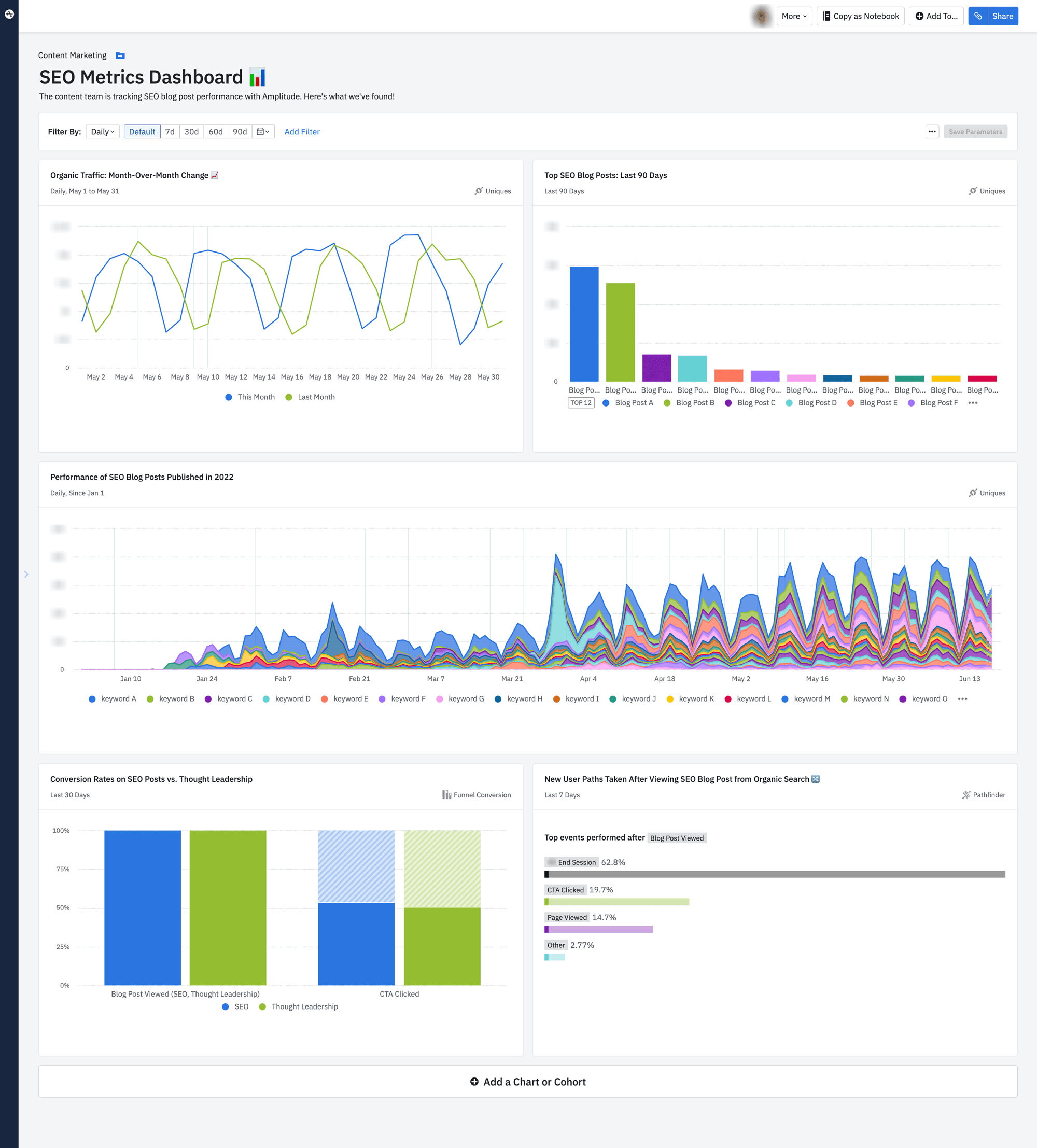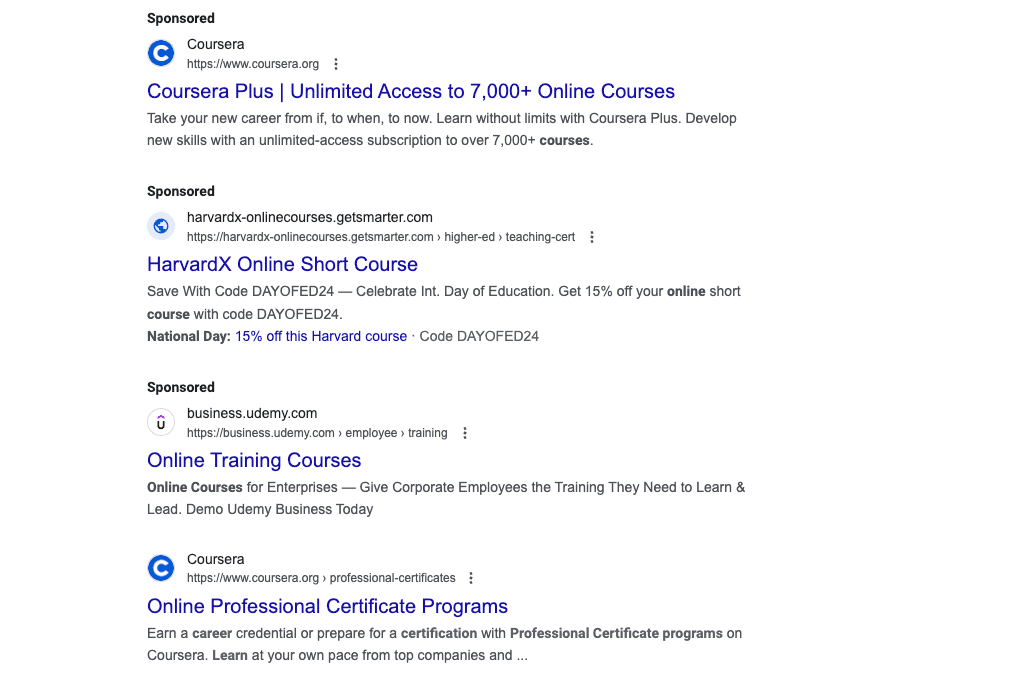8 SEO Tactics to Boost Organic Growth for Your Startup
From improving your content marketing to rethinking your link-building approach, learn how to develop your SEO strategy quickly and affordably.
A thoughtfully developed search engine optimization (SEO) strategy can be a powerful growth accelerator for SaaS startups—boosting organic traffic and brand visibility. According to Conductor’s State of SEO report, 93% of digital marketers felt that SEO positively supported their website performance and marketing goals in 2023.
Investing in SEO early in your startup journey is smart. It leads to valuable long-term results and doesn’t require a huge budget. Use the following SEO tactics to support your product-led growth plan.
Key SEO Tactics
Try these eight impactful SEO approaches to drive organic growth:
- Launch your startup SEO strategy with in-depth market research
- Optimize website on-page SEO
- Prioritize content creation and promotion
- Follow technical SEO best practices
- Establish link-building and cross-promotional partnerships
- Track SEO progress with analytics
- Support SEO performance with paid advertising
- Integrate additional marketing channels into your workflow
1. Launch your startup SEO strategy with in-depth market research
The first step in developing a solid SEO strategy is understanding your audience’s needs and interests and the state of your industry. This foundational knowledge will enable you to create and optimize content for organic search. The following are the key research areas to explore.
Audience research
Anticipating and understanding what your customers will search for requires an intimate understanding of your audience’s preferences, frustrations, and responsibilities. But how do you get those insights? Here are some effective research methods:
Ask them directly
Talk to customers directly, ask them to respond to questions you pose on your active social media channels, and send surveys to your email subscribers.
Talk to your sales and product teams
Get valuable feedback from internal experts. Ask your sales teams about their customers’ problems and questions, and ask product managers what specific features they think customers should know more about.
Use audience research tools
Audience research resources abound. A few to consider:
- Google Trends indicates the phrases and topics people search for over time and across different regions.
- SparkToro shows the social accounts, websites, podcasts, subreddits, and YouTube channels your audience follows.
- Amplitude provides detailed, real-time insights into your website users’ activities and behaviors.
Keyword research
Once you’ve completed your initial audience research, use that information to research target keywords. Make a list of your target audience's unique pain points, challenges, interests, tasks, and responsibilities. Then, use keyword research tools like Ahrefs or Semrush to find viable keyword options.
Match keywords with search intent
When selecting target keywords, align search intent with the nature of your content. What is search intent? It’s the underlying purpose or goal behind a user’s search query—the reason they started searching in the first place.
Search engines use algorithms to interpret the intent behind specific terms used. Some phrases are used to research products to purchase (commercial intent), and some are used to learn more about a topic (discovery intent).
For example, the term you target when writing your product page should have commercial intent—think “project management software.” However, an informational blog post should target a discovery term that reflects a reader’s desire to answer a question or solve a problem—like, “What is a project management plan?”
Factor in search volume and keyword difficulty
It’s also important to consider search volume and ranking difficulty when planning keywords. Search volume tells you how many searches for that keyword occur each month, and ranking difficulty is usually a score from one to 100 or easiest to most difficult. Pick terms with enough monthly volume to bring in website visitors and a low enough difficulty score to rank against competing content.
Competitor research
Evaluate the top competitors for your product or niche to understand their website content and what they’re ranking for. This exercise will show you topics you should cover to outrank them on target terms and potential gaps in their content that you can fill. Tools—like Ahrefs’s Content Gap—can show you what your competitors rank for that you don’t.
Industry research
Keep up with your industry's latest updates and trends by following relevant publications, podcasts, and social media thought leaders. This knowledge will help you create timely, relevant content about popular and emerging topics. Amplitude’s Cohort Slack Community is a great way to follow and interact with industry peers.
2. Optimize website on-page SEO
What’s the best place to start implementing SEO techniques and improvements? Your existing website content. Start by ensuring your website is accessible to users and has relevant landing and product pages optimized for search.
Follow Semrush’s on-page SEO checklist to confirm your site pages include target keywords, correct title and heading tags, a compelling meta description, internal links to other content, and other criteria. Beyond these requirements, optimize your product pages for conversions with rich, detailed descriptions and clear calls to action (CTAs).
3. Prioritize content creation and promotion
In addition to your main product and landing pages, audit your blog content for opportunities to refresh content. Refresh blog posts to ensure they include target keywords in the title and body copy and are up-to-date and thorough. When optimizing new or existing content, follow Google’s EEAT quality standards to increase organic ranking potential. Prioritize content creation and promotion
Use the insights gained from your market research to develop helpful, educational content related to how your SaaS product solves your audience’s pain points. Demonstrate how your product provides customer value in case studies that showcase tangible ROI.
Create variety with a mix of shorter blog posts and long-form ebooks and guides. Developing new educational content also gives you more opportunities to rank for the long-tail keywords customers use to find answers to problems and questions.
Additionally, how you promote and distribute your content is critical. Promote content that lives on one channel—let’s say, an ebook on your resource center—across your other channels, like social media or podcasts. Cross-channel promotion will help drive traffic to the original asset and establish thought leadership.
4. Follow technical SEO best practices
Technical SEO is integral to your overall SEO strategy because it helps create a quality user experience, one of Google’s key ranking factors. To maintain technical SEO excellence, work with your web development team to establish optimal site speed and ensure your site is mobile-friendly.
Schema markup is another way to boost your search visibility and drive more organic traffic. Schema markup is extra code added to web pages to help contextualize them for search engines and produce rich snippets in search results.
Finally, procuring a Secure Sockets Layer (SSL) certificate will add extra security protection for your website to protect against threats like viruses and hackers.
5. Establish link-building and cross-promotional partnerships
Garnering backlinks to your content and forming solid relationships with industry influencers boosts startup SEO momentum. When reputable websites link to your content, the benefits are twofold—it drives traffic and increases your domain rating, making it easier for you to compete for keyword rankings.
The best way to earn backlinks is to create something worth linking to: content that offers value. Incorporating original data and engaging multimedia, like images and videos, creates big link-building appeal. Semrush’s State of Content Marketing report found that 55% more backlinks were earned from blog posts with over seven images compared to those without. Additionally, articles with at least one video generated 70% more traffic than those without any.
Pursue mutually beneficial relationships with industry thought leaders by citing them as subject matter experts in your content. Then, you can share that content and tag them on social media. This will encourage them to reciprocate by sharing your content and featuring your brand in theirs.
6. Track SEO progress with analytics
Measure the results of your SEO strategy with advanced analytics tools to make informed decisions. Look at overall key performance indicators (KPIs), like monthly pageviews, average time on site, number and quality of top-ranking keywords, and number of backlinks generated.
Dig granularly into your content performance, reviewing top and bottom-performing web pages, assets, and blog posts. You can build a custom SEO dashboard in Amplitude with all of these KPIs, plus conversion rates, traffic acquisition sources, and more, as shown below.

Try building these charts yourself with Amplitude’s free self-serve demo.
Reviewing your SEO analytics will help you understand which content types attract visitors and qualified traffic and reveal content you need to develop or optimize. If a particular keyword generates a lot of traffic, look for other related keywords for which you can craft new content. If traffic and rankings decline for a previously high-performing piece of content, investigate how you can optimize it for better results.
7. Support SEO performance with paid advertising
SEO focuses solely on increasing organic traffic and search results. Search engine marketing (SEM) expands on organic SEO to include paid search campaigns. Paid SEM campaigns are also called pay-per-click (PPC) ads because you only pay when a user clicks on the paid search result.
The following is an example of how paid search results appear above organic results at the top of Google’s results page for the term “professional online courses.”

SEM is a way to bolster results for priority content, boost landing and product pages, and increase overall brand awareness.
8. Integrate additional marketing channels into your workflow
To consistently rank highly in SEO, it’s essential to integrate your marketing campaigns across multiple channels. The most effective way to do so? Use your customer data to drive downstream marketing campaigns.
With Amplitude, you can create custom groups of users—cohorts—based on the actions they take on your website. You can then sync these cohorts to downstream marketing tools like Intercom, Marketo, or Braze to boost engagement and retention.
Accelerate your startup’s growth with Amplitude
Implementing these essential tactics will help your SaaS startup drive qualified top-of-funnel visitors. With helpful content, engaging calls to action, and the right customer data, you can easily convert those visitors into customers.
Ready to accelerate your startup growth? Apply for Amplitude’s Startup Scholarship today and connect with industry peers and experts by joining Amplitude’s Cohort Slack Community.

Andrae Washington
Startup Programs Manager, Amplitude
Andrae is Amplitude's Startup Programs Manager, focused on empowering pre-seed to Series A startups, as well as building out our venture partners ecosystem. He is a previous 2x Founder and a 2021 UC Berkeley FORM + FUND accelerator alum. Learn more about Amplitude's startup programs at amplitude.com/startups
More from Andrae




